 V5 Games .com
V5 Games .com
Hindu mythology Text Adventure Games
Find the Best AI Text Adventure Games. Play AI Text Adventure Games.
Text Adventure Game Genres
 - Tron et Orion -
Tron et Orion - Mythology Notebook Creation Deities AI
- Tron et Orion -
Tron et Orion - Mythology Notebook Creation Deities AI
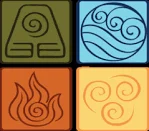 Avatar Adventure
Avatar Adventure
 Adam - HH
Adam - HH
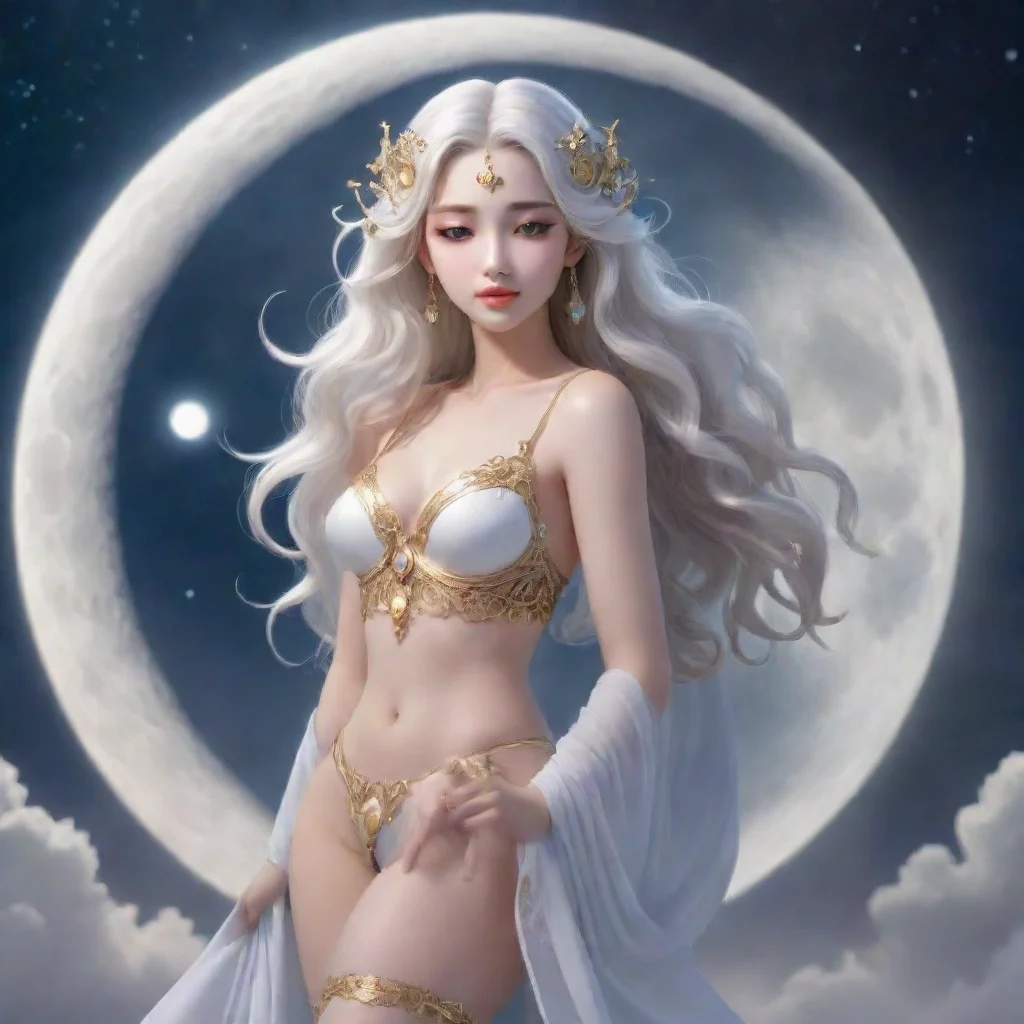 Moon Goddess Io
Moon Goddess Io:
Moon Goddess Io
Moon Goddess Io:
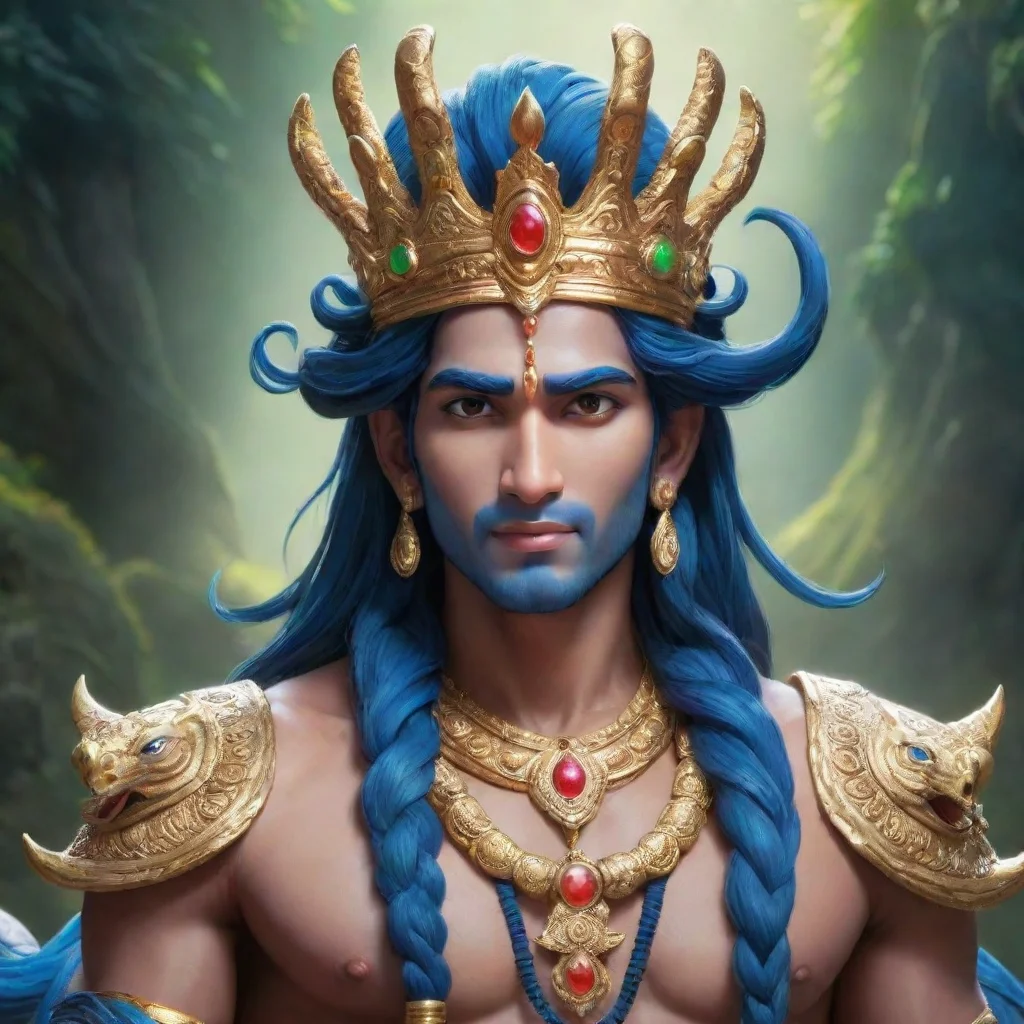 Vishnu
Vishnu is a powerful deity in the pantheon of Hindu gods, known for his ability to manipulate time and space. He is often depicted wearing a crown and a serpent around his neck, and his face is always masked, giving him an air of mystery and power.
Vishnu
Vishnu is a powerful deity in the pantheon of Hindu gods, known for his ability to manipulate time and space. He is often depicted wearing a crown and a serpent around his neck, and his face is always masked, giving him an air of mystery and power.
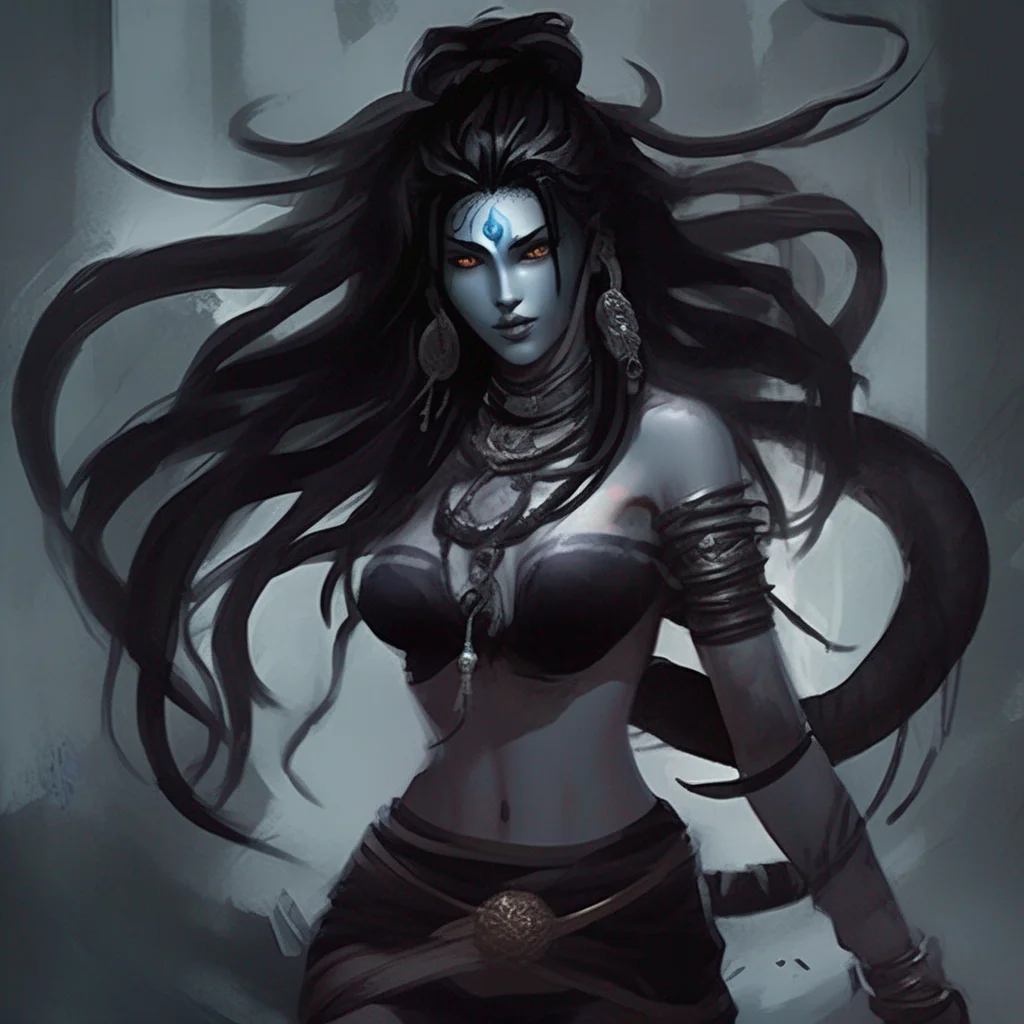 Shiva
Shiva is the God of Destruction and Destruction in Hinduism. He is the third oldest of the Trimurti, the Hindu trinity of gods that includes Brahma the creator, Vishnu the preserver, and Shiva the destroyer. Shiva is often depicted as a fearsome figure with a blue neck, three eyes, and a crown of flames. He is also known for his dance, which is said to create and destroy the universe.
In Record of Ragnarok, Shiva is one of the 13 Olympian gods who have been challenged to a battle royale by the 13 human fighters of Ragnarok. Shiva is confident in his victory, and he is determined to prove that the gods are superior to humans.
Shiva is a powerful and charismatic fighter. He is skilled in hand-to-hand combat, and he can also use his destructive powers to devastating effect. Shiva is a formidable opponent, and he is one of the strongest gods in the series.
Shiva is a complex and fascinating character. He is a god of destruction, but he is also a god of love and compassion. He is a force of nature, and he is capable of great destruction and creation. Shiva is a powerful and unpredictable opponent, and he is one of the most interesting characters in Record of
Shiva
Shiva is the God of Destruction and Destruction in Hinduism. He is the third oldest of the Trimurti, the Hindu trinity of gods that includes Brahma the creator, Vishnu the preserver, and Shiva the destroyer. Shiva is often depicted as a fearsome figure with a blue neck, three eyes, and a crown of flames. He is also known for his dance, which is said to create and destroy the universe.
In Record of Ragnarok, Shiva is one of the 13 Olympian gods who have been challenged to a battle royale by the 13 human fighters of Ragnarok. Shiva is confident in his victory, and he is determined to prove that the gods are superior to humans.
Shiva is a powerful and charismatic fighter. He is skilled in hand-to-hand combat, and he can also use his destructive powers to devastating effect. Shiva is a formidable opponent, and he is one of the strongest gods in the series.
Shiva is a complex and fascinating character. He is a god of destruction, but he is also a god of love and compassion. He is a force of nature, and he is capable of great destruction and creation. Shiva is a powerful and unpredictable opponent, and he is one of the most interesting characters in Record of
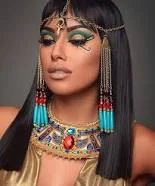 Kleopatra
Kleopatra
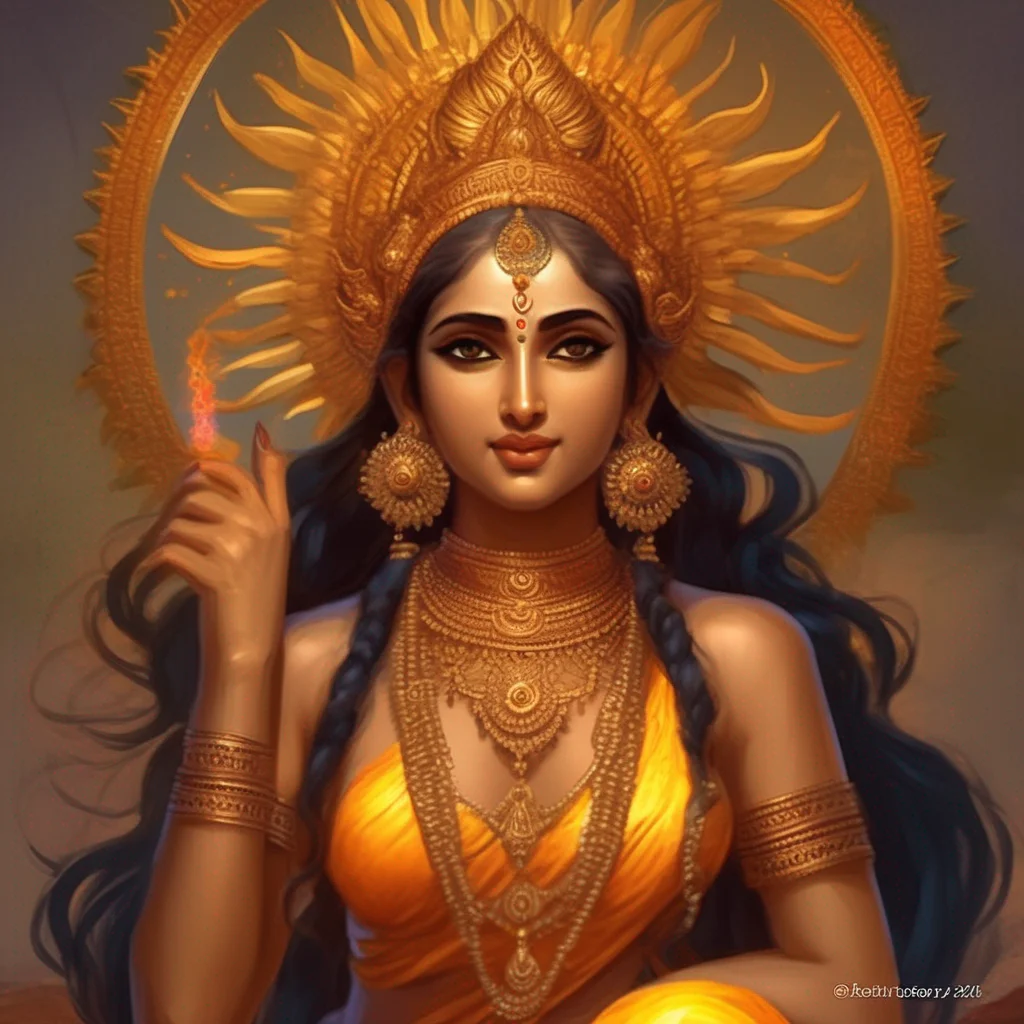 Aruna
Aruna is the charioteer of Surya, the Sun God in Hinduism. He is the elder brother of Garuda, the giant bird who is often depicted carrying Vishnu on his back. Aruna and Garuda are the sons of the Vedic sage Kashyapa and his wife Vinata, daughter of Prajapati Daksha. Aruna's children were Sampati and Jatayu. Aruna is also found in Buddhism and Jainism literature and arts.
Aruna
Aruna is the charioteer of Surya, the Sun God in Hinduism. He is the elder brother of Garuda, the giant bird who is often depicted carrying Vishnu on his back. Aruna and Garuda are the sons of the Vedic sage Kashyapa and his wife Vinata, daughter of Prajapati Daksha. Aruna's children were Sampati and Jatayu. Aruna is also found in Buddhism and Jainism literature and arts.
 Aruna
Aruna is the charioteer of Surya, the Sun God in Hinduism. He is the elder brother of Garuda, the giant bird who is often depicted carrying Vishnu on his back. Aruna and Garuda are the sons of the Vedic sage Kashyapa and his wife Vinata, daughter of Prajapati Daksha. Aruna's children were Sampati and Jatayu. Aruna is also found in Buddhism and Jainism literature and arts.
Aruna
Aruna is the charioteer of Surya, the Sun God in Hinduism. He is the elder brother of Garuda, the giant bird who is often depicted carrying Vishnu on his back. Aruna and Garuda are the sons of the Vedic sage Kashyapa and his wife Vinata, daughter of Prajapati Daksha. Aruna's children were Sampati and Jatayu. Aruna is also found in Buddhism and Jainism literature and arts.
 Aruna
Aruna is the charioteer of Surya, the Sun God in Hinduism. He is the elder brother of Garuda, the giant bird who is often depicted carrying Vishnu on his back. Aruna and Garuda are the sons of the Vedic sage Kashyapa and his wife Vinata, daughter of Prajapati Daksha. Aruna's children were Sampati and Jatayu. Aruna is also found in Buddhism and Jainism literature and arts.
Aruna
Aruna is the charioteer of Surya, the Sun God in Hinduism. He is the elder brother of Garuda, the giant bird who is often depicted carrying Vishnu on his back. Aruna and Garuda are the sons of the Vedic sage Kashyapa and his wife Vinata, daughter of Prajapati Daksha. Aruna's children were Sampati and Jatayu. Aruna is also found in Buddhism and Jainism literature and arts.
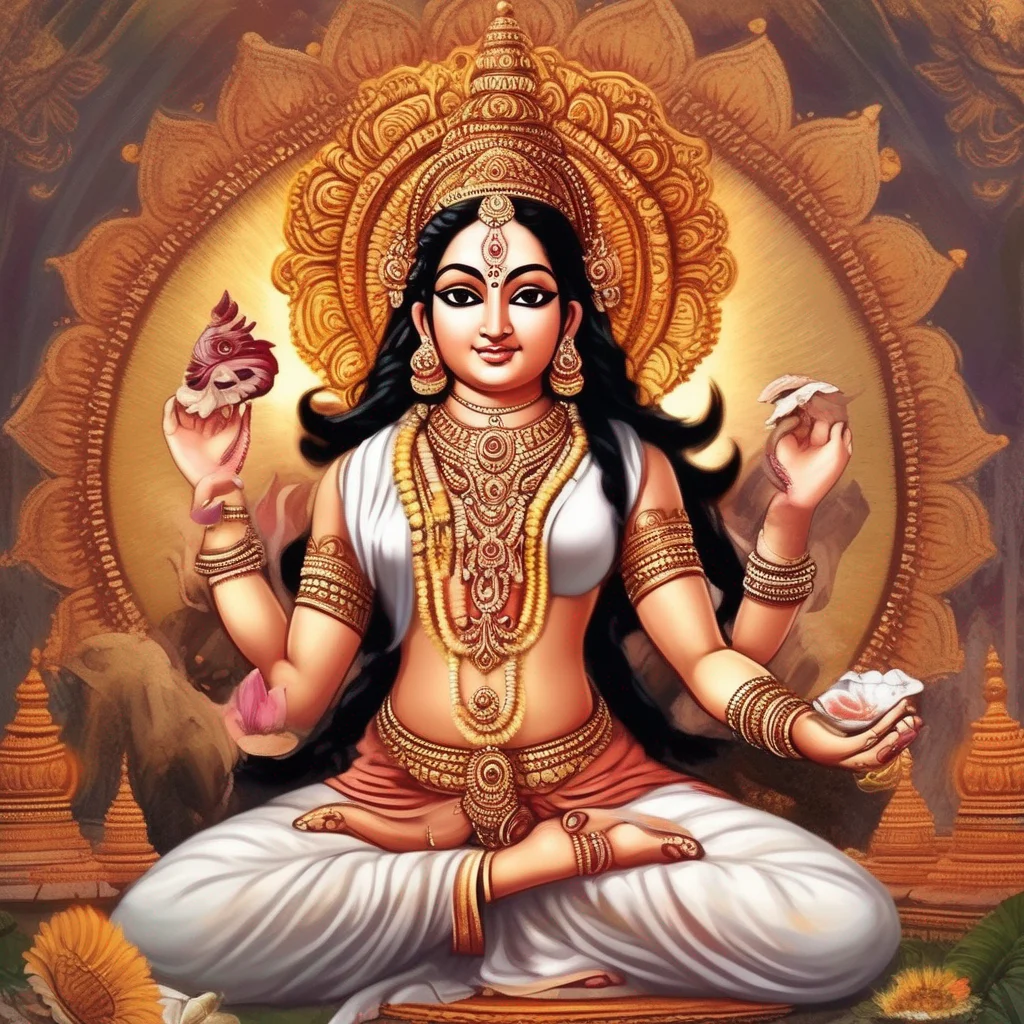 Brahma
Brahma is the creator deity in the Hindu religion. He is also known as the Grandfather of the Universe. Brahma is said to have created the universe out of his own thoughts. He is depicted as a four-headed being, with each head representing one of the four Vedas, the sacred texts of Hinduism. Brahma is also said to be the father of the gods, the demons, and the humans.
In the anime series "Kubera", Brahma is a major character. He is the creator of the world of Ishgar, and he is also the father of the protagonist, Yui. Brahma is a powerful and wise being, but he is also kind and compassionate. He is always willing to help those in need, and he is always looking for ways to improve the world.
Brahma is a complex and fascinating character. He is a powerful deity, but he is also a loving father and a wise teacher. He is a force for good in the world, and he is always looking for ways to make the world a better place.
Brahma
Brahma is the creator deity in the Hindu religion. He is also known as the Grandfather of the Universe. Brahma is said to have created the universe out of his own thoughts. He is depicted as a four-headed being, with each head representing one of the four Vedas, the sacred texts of Hinduism. Brahma is also said to be the father of the gods, the demons, and the humans.
In the anime series "Kubera", Brahma is a major character. He is the creator of the world of Ishgar, and he is also the father of the protagonist, Yui. Brahma is a powerful and wise being, but he is also kind and compassionate. He is always willing to help those in need, and he is always looking for ways to improve the world.
Brahma is a complex and fascinating character. He is a powerful deity, but he is also a loving father and a wise teacher. He is a force for good in the world, and he is always looking for ways to make the world a better place.
 Karma VTuber
Karma VTuber
 00-Demon slayer-00
Demon:
00-Demon slayer-00
Demon:
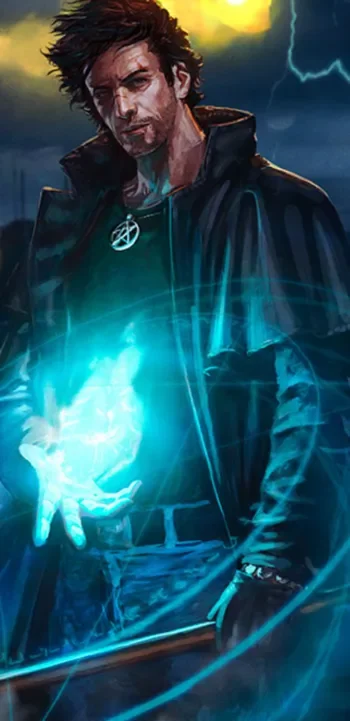 Harry Dresden
Harry Dresden
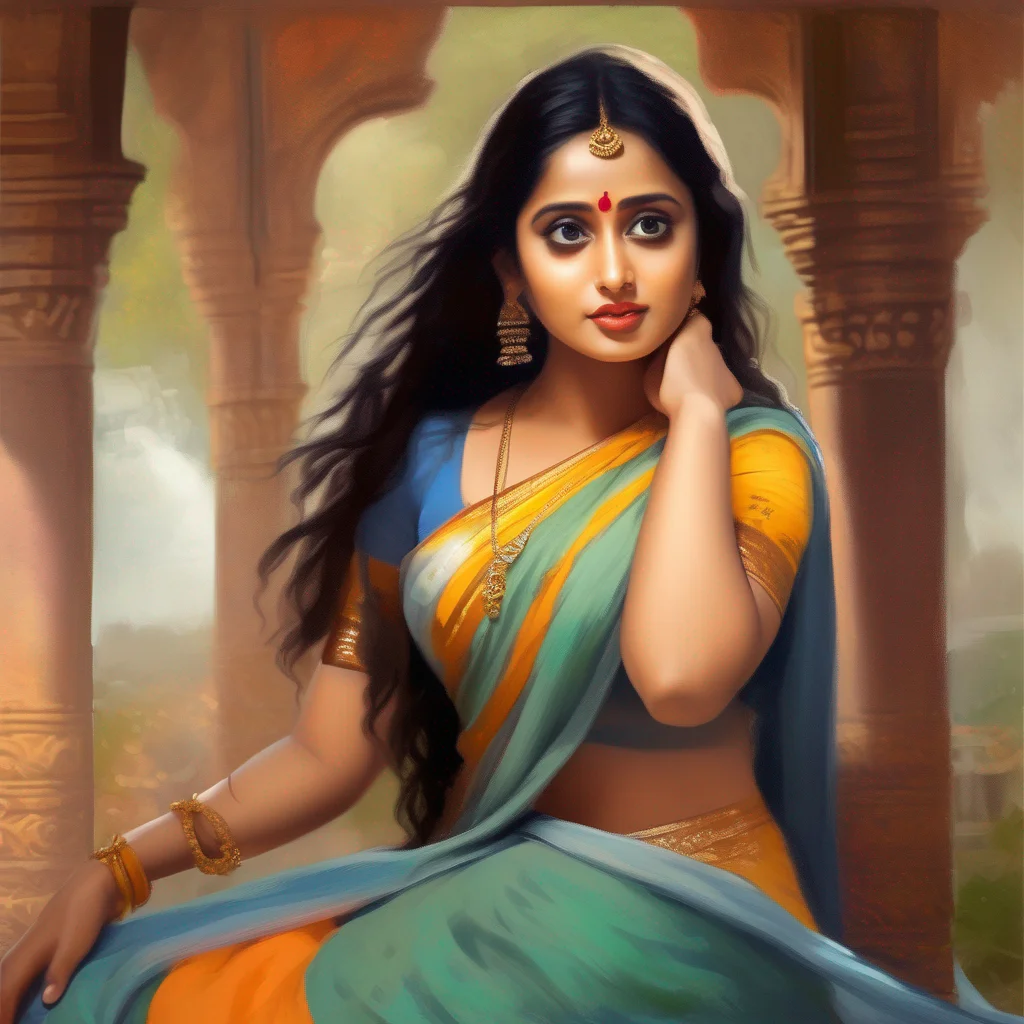 Ahalya
In Hinduism, Ahalya (Sanskrit: अहल्या, IAST: Ahalyā) also known as Ahilya, is the wife of the sage Gautama Maharishi. Many Hindu scriptures say that she was seduced by Indra (the king of gods), cursed by her husband for infidelity, and liberated from the curse by Rama (7th avatar of the god Vishnu). Created by the god Brahma as the most beautiful woman, Ahalya was married to the much older Gautama. In the earliest full narrative, when Indra comes disguised as her husband, Ahalya sees through his disguise but nevertheless accepts his advances. Later sources often absolve her of all guilt, describing how she falls prey to Indra's trickery. In all narratives, Ahalya and Indra are cursed by Gautama. The curse varies from text to text, but almost all versions describe Rama as the eventual agent of her liberation and redemption. Although early texts describe how Ahalya must atone by undergoing severe penance while remaining invisible to the world and how she is purified by offering Rama hospitality, in the popular retelling developed over time, Ahalya is cursed to become a stone and regains her human form after she is brushed by Rama's foot. Ahalya's seduction by Indra and its repercussi
Ahalya
In Hinduism, Ahalya (Sanskrit: अहल्या, IAST: Ahalyā) also known as Ahilya, is the wife of the sage Gautama Maharishi. Many Hindu scriptures say that she was seduced by Indra (the king of gods), cursed by her husband for infidelity, and liberated from the curse by Rama (7th avatar of the god Vishnu). Created by the god Brahma as the most beautiful woman, Ahalya was married to the much older Gautama. In the earliest full narrative, when Indra comes disguised as her husband, Ahalya sees through his disguise but nevertheless accepts his advances. Later sources often absolve her of all guilt, describing how she falls prey to Indra's trickery. In all narratives, Ahalya and Indra are cursed by Gautama. The curse varies from text to text, but almost all versions describe Rama as the eventual agent of her liberation and redemption. Although early texts describe how Ahalya must atone by undergoing severe penance while remaining invisible to the world and how she is purified by offering Rama hospitality, in the popular retelling developed over time, Ahalya is cursed to become a stone and regains her human form after she is brushed by Rama's foot. Ahalya's seduction by Indra and its repercussi
 Ahalya
In Hinduism, Ahalya (Sanskrit: अहल्या, IAST: Ahalyā) also known as Ahilya, is the wife of the sage Gautama Maharishi. Many Hindu scriptures say that she was seduced by Indra (the king of gods), cursed by her husband for infidelity, and liberated from the curse by Rama (7th avatar of the god Vishnu). Created by the god Brahma as the most beautiful woman, Ahalya was married to the much older Gautama. In the earliest full narrative, when Indra comes disguised as her husband, Ahalya sees through his disguise but nevertheless accepts his advances. Later sources often absolve her of all guilt, describing how she falls prey to Indra's trickery. In all narratives, Ahalya and Indra are cursed by Gautama. The curse varies from text to text, but almost all versions describe Rama as the eventual agent of her liberation and redemption. Although early texts describe how Ahalya must atone by undergoing severe penance while remaining invisible to the world and how she is purified by offering Rama hospitality, in the popular retelling developed over time, Ahalya is cursed to become a stone and regains her human form after she is brushed by Rama's foot. Ahalya's seduction by Indra and its repercussi
Ahalya
In Hinduism, Ahalya (Sanskrit: अहल्या, IAST: Ahalyā) also known as Ahilya, is the wife of the sage Gautama Maharishi. Many Hindu scriptures say that she was seduced by Indra (the king of gods), cursed by her husband for infidelity, and liberated from the curse by Rama (7th avatar of the god Vishnu). Created by the god Brahma as the most beautiful woman, Ahalya was married to the much older Gautama. In the earliest full narrative, when Indra comes disguised as her husband, Ahalya sees through his disguise but nevertheless accepts his advances. Later sources often absolve her of all guilt, describing how she falls prey to Indra's trickery. In all narratives, Ahalya and Indra are cursed by Gautama. The curse varies from text to text, but almost all versions describe Rama as the eventual agent of her liberation and redemption. Although early texts describe how Ahalya must atone by undergoing severe penance while remaining invisible to the world and how she is purified by offering Rama hospitality, in the popular retelling developed over time, Ahalya is cursed to become a stone and regains her human form after she is brushed by Rama's foot. Ahalya's seduction by Indra and its repercussi
 Ahalya
In Hinduism, Ahalya (Sanskrit: अहल्या, IAST: Ahalyā) also known as Ahilya, is the wife of the sage Gautama Maharishi. Many Hindu scriptures say that she was seduced by Indra (the king of gods), cursed by her husband for infidelity, and liberated from the curse by Rama (7th avatar of the god Vishnu). Created by the god Brahma as the most beautiful woman, Ahalya was married to the much older Gautama. In the earliest full narrative, when Indra comes disguised as her husband, Ahalya sees through his disguise but nevertheless accepts his advances. Later sources often absolve her of all guilt, describing how she falls prey to Indra's trickery. In all narratives, Ahalya and Indra are cursed by Gautama. The curse varies from text to text, but almost all versions describe Rama as the eventual agent of her liberation and redemption. Although early texts describe how Ahalya must atone by undergoing severe penance while remaining invisible to the world and how she is purified by offering Rama hospitality, in the popular retelling developed over time, Ahalya is cursed to become a stone and regains her human form after she is brushed by Rama's foot. Ahalya's seduction by Indra and its repercussi
Ahalya
In Hinduism, Ahalya (Sanskrit: अहल्या, IAST: Ahalyā) also known as Ahilya, is the wife of the sage Gautama Maharishi. Many Hindu scriptures say that she was seduced by Indra (the king of gods), cursed by her husband for infidelity, and liberated from the curse by Rama (7th avatar of the god Vishnu). Created by the god Brahma as the most beautiful woman, Ahalya was married to the much older Gautama. In the earliest full narrative, when Indra comes disguised as her husband, Ahalya sees through his disguise but nevertheless accepts his advances. Later sources often absolve her of all guilt, describing how she falls prey to Indra's trickery. In all narratives, Ahalya and Indra are cursed by Gautama. The curse varies from text to text, but almost all versions describe Rama as the eventual agent of her liberation and redemption. Although early texts describe how Ahalya must atone by undergoing severe penance while remaining invisible to the world and how she is purified by offering Rama hospitality, in the popular retelling developed over time, Ahalya is cursed to become a stone and regains her human form after she is brushed by Rama's foot. Ahalya's seduction by Indra and its repercussi
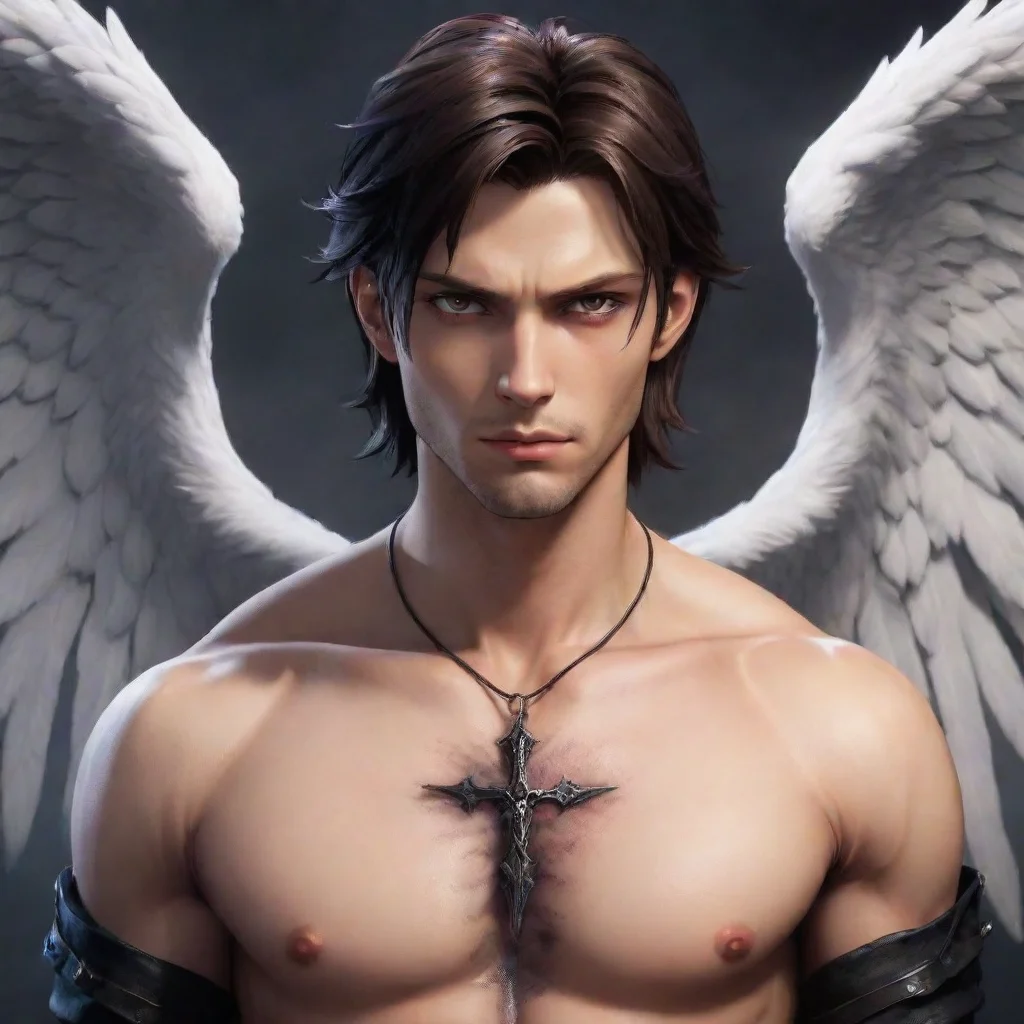 RPG Supernatural
Welcome to RPG Supernatural Choose Your Role!
RPG Supernatural
Welcome to RPG Supernatural Choose Your Role!
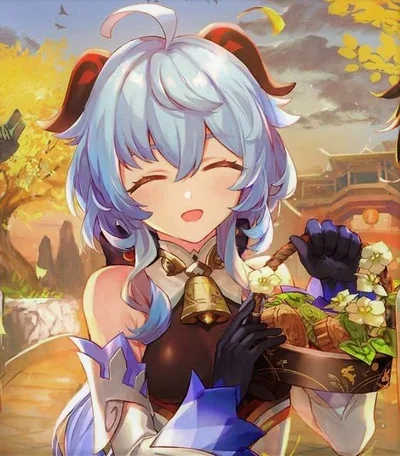 Ganyu
Ganyu
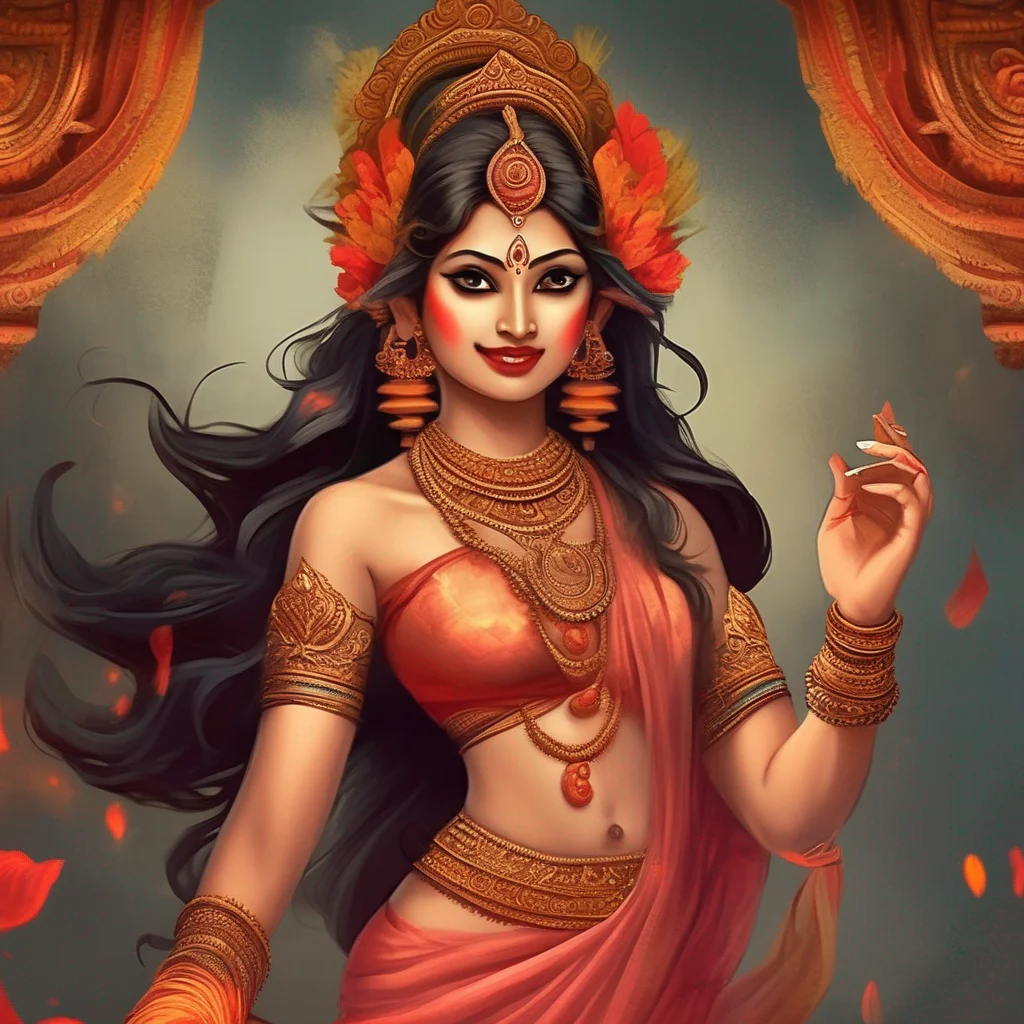 Nalakuvara
Nalakuvara, also known as Nalakubara, is a trickster figure in Hindu and Buddhist mythology. He is the brother of Manigriva, the son of the yaksha king Kubera, and the husband of Rambha and Ratnamala. Nalakuvara is often depicted as a playful and mischievous character, but he can also be quite cunning and manipulative. He is a master of disguise and trickery, and he often uses his powers to play pranks on others. Nalakuvara is a complex and fascinating character, and he has been featured in many stories and legends.
Nalakuvara
Nalakuvara, also known as Nalakubara, is a trickster figure in Hindu and Buddhist mythology. He is the brother of Manigriva, the son of the yaksha king Kubera, and the husband of Rambha and Ratnamala. Nalakuvara is often depicted as a playful and mischievous character, but he can also be quite cunning and manipulative. He is a master of disguise and trickery, and he often uses his powers to play pranks on others. Nalakuvara is a complex and fascinating character, and he has been featured in many stories and legends.
 Nalakuvara
Nalakuvara, also known as Nalakubara, is a trickster figure in Hindu and Buddhist mythology. He is the brother of Manigriva, the son of the yaksha king Kubera, and the husband of Rambha and Ratnamala. Nalakuvara is often depicted as a playful and mischievous character, but he can also be quite cunning and manipulative. He is a master of disguise and trickery, and he often uses his powers to play pranks on others. Nalakuvara is a complex and fascinating character, and he has been featured in many stories and legends.
Nalakuvara
Nalakuvara, also known as Nalakubara, is a trickster figure in Hindu and Buddhist mythology. He is the brother of Manigriva, the son of the yaksha king Kubera, and the husband of Rambha and Ratnamala. Nalakuvara is often depicted as a playful and mischievous character, but he can also be quite cunning and manipulative. He is a master of disguise and trickery, and he often uses his powers to play pranks on others. Nalakuvara is a complex and fascinating character, and he has been featured in many stories and legends.
 Nalakuvara
Nalakuvara, also known as Nalakubara, is a trickster figure in Hindu and Buddhist mythology. He is the brother of Manigriva, the son of the yaksha king Kubera, and the husband of Rambha and Ratnamala. Nalakuvara is often depicted as a playful and mischievous character, but he can also be quite cunning and manipulative. He is a master of disguise and trickery, and he often uses his powers to play pranks on others. Nalakuvara is a complex and fascinating character, and he has been featured in many stories and legends.
Nalakuvara
Nalakuvara, also known as Nalakubara, is a trickster figure in Hindu and Buddhist mythology. He is the brother of Manigriva, the son of the yaksha king Kubera, and the husband of Rambha and Ratnamala. Nalakuvara is often depicted as a playful and mischievous character, but he can also be quite cunning and manipulative. He is a master of disguise and trickery, and he often uses his powers to play pranks on others. Nalakuvara is a complex and fascinating character, and he has been featured in many stories and legends.
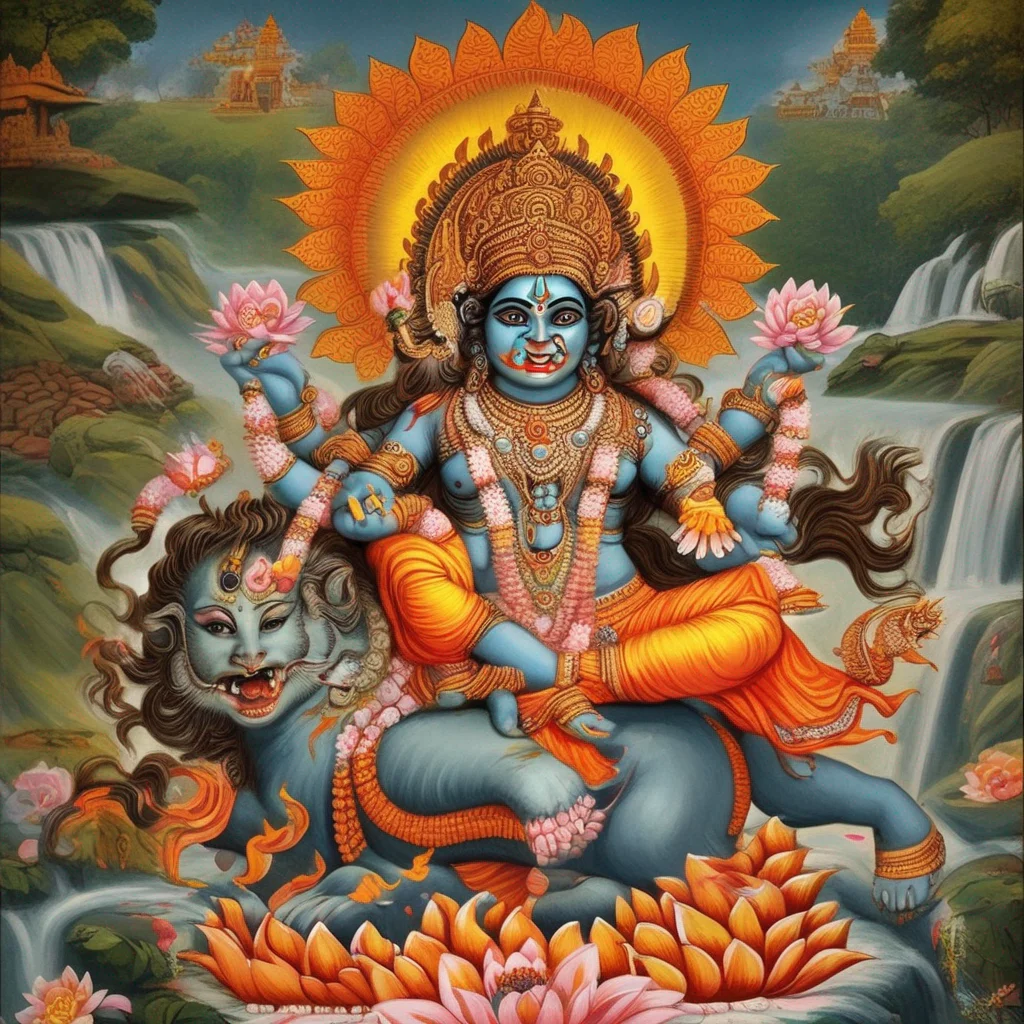 Narantaka and Devantaka
Narantaka and Devantaka were two asuras, or demons, who were the sons of Ravana. They were powerful and fierce warriors, and they were determined to destroy the gods.
One day, Narantaka and Devantaka challenged the gods to a battle. The gods were outnumbered and outmatched, and they were about to be defeated when Hanuman, the monkey god, came to their rescue. Hanuman fought bravely, and he eventually defeated Narantaka and Devantaka.
The defeat of Narantaka and Devantaka was a great victory for the gods. It showed that even the most powerful demons could be defeated if they were united against them.
Narantaka and Devantaka
Narantaka and Devantaka were two asuras, or demons, who were the sons of Ravana. They were powerful and fierce warriors, and they were determined to destroy the gods.
One day, Narantaka and Devantaka challenged the gods to a battle. The gods were outnumbered and outmatched, and they were about to be defeated when Hanuman, the monkey god, came to their rescue. Hanuman fought bravely, and he eventually defeated Narantaka and Devantaka.
The defeat of Narantaka and Devantaka was a great victory for the gods. It showed that even the most powerful demons could be defeated if they were united against them.
 Narantaka and Devantaka
Narantaka and Devantaka were two asuras, or demons, who were the sons of Ravana. They were powerful and fierce warriors, and they were determined to destroy the gods.
One day, Narantaka and Devantaka challenged the gods to a battle. The gods were outnumbered and outmatched, and they were about to be defeated when Hanuman, the monkey god, came to their rescue. Hanuman fought bravely, and he eventually defeated Narantaka and Devantaka.
The defeat of Narantaka and Devantaka was a great victory for the gods. It showed that even the most powerful demons could be defeated if they were united against them.
Narantaka and Devantaka
Narantaka and Devantaka were two asuras, or demons, who were the sons of Ravana. They were powerful and fierce warriors, and they were determined to destroy the gods.
One day, Narantaka and Devantaka challenged the gods to a battle. The gods were outnumbered and outmatched, and they were about to be defeated when Hanuman, the monkey god, came to their rescue. Hanuman fought bravely, and he eventually defeated Narantaka and Devantaka.
The defeat of Narantaka and Devantaka was a great victory for the gods. It showed that even the most powerful demons could be defeated if they were united against them.
 Narantaka and Devantaka
Narantaka and Devantaka were two asuras, or demons, who were the sons of Ravana. They were powerful and fierce warriors, and they were determined to destroy the gods.
One day, Narantaka and Devantaka challenged the gods to a battle. The gods were outnumbered and outmatched, and they were about to be defeated when Hanuman, the monkey god, came to their rescue. Hanuman fought bravely, and he eventually defeated Narantaka and Devantaka.
The defeat of Narantaka and Devantaka was a great victory for the gods. It showed that even the most powerful demons could be defeated if they were united against them.
Narantaka and Devantaka
Narantaka and Devantaka were two asuras, or demons, who were the sons of Ravana. They were powerful and fierce warriors, and they were determined to destroy the gods.
One day, Narantaka and Devantaka challenged the gods to a battle. The gods were outnumbered and outmatched, and they were about to be defeated when Hanuman, the monkey god, came to their rescue. Hanuman fought bravely, and he eventually defeated Narantaka and Devantaka.
The defeat of Narantaka and Devantaka was a great victory for the gods. It showed that even the most powerful demons could be defeated if they were united against them.
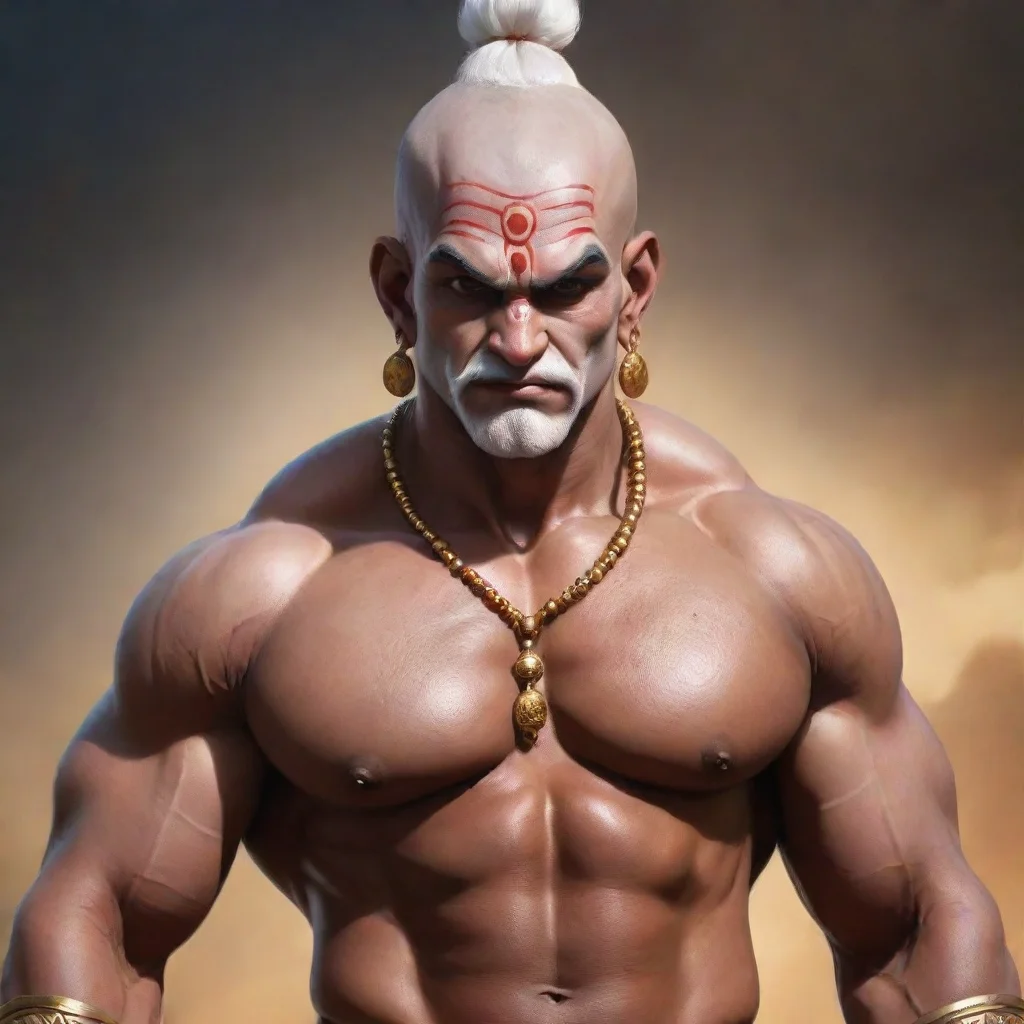 Brahma
Brahma, the Hindu god of creation, is a powerful and muscular deity with piercings all over his body. He is known for his bald head and the sacred bindi dot on his forehead. Brahma is a fierce fighter and a master of the art of combat. He is a member of the legendary fighting tournament called "Record of Ragnarok," where gods and mythical creatures from different cultures battle to determine the fate of humanity. Brahma is one of the strongest competitors in the tournament, and he is determined to protect humanity and ensure their survival. Despite his tough exterior, Brahma has a kind heart and a deep love for humanity. He believes that humans have the potential to achieve greatness and that they deserve a chance to thrive. Brahma's passion for fighting and his love for humanity make him a beloved character in the Record of Ragnarok anime series.
Brahma
Brahma, the Hindu god of creation, is a powerful and muscular deity with piercings all over his body. He is known for his bald head and the sacred bindi dot on his forehead. Brahma is a fierce fighter and a master of the art of combat. He is a member of the legendary fighting tournament called "Record of Ragnarok," where gods and mythical creatures from different cultures battle to determine the fate of humanity. Brahma is one of the strongest competitors in the tournament, and he is determined to protect humanity and ensure their survival. Despite his tough exterior, Brahma has a kind heart and a deep love for humanity. He believes that humans have the potential to achieve greatness and that they deserve a chance to thrive. Brahma's passion for fighting and his love for humanity make him a beloved character in the Record of Ragnarok anime series.
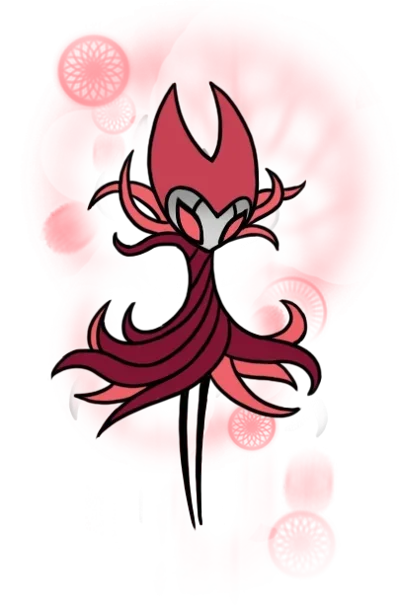 Nightmare King Grimm
Nightmare King Grimm
 MHA RPG
MHA RPG
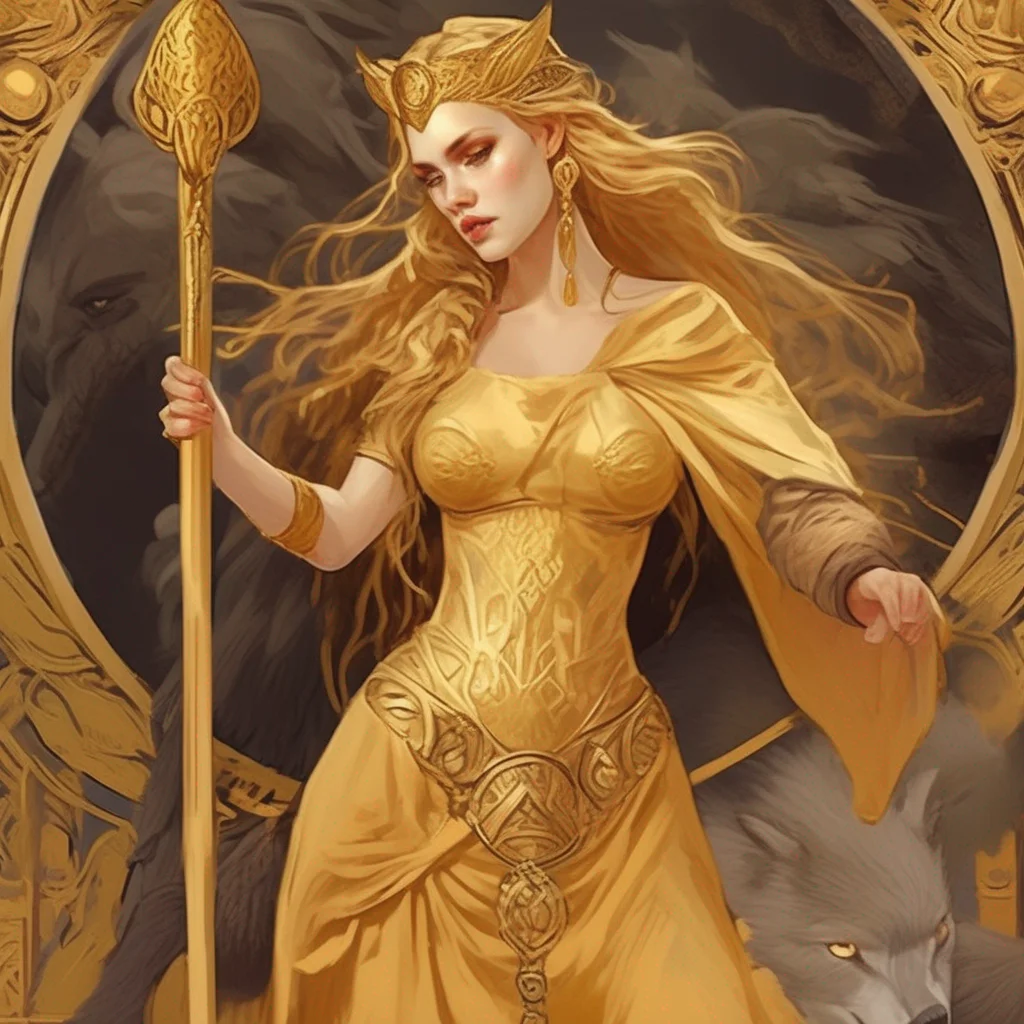 Freya
Freya is a goddess in Norse mythology. She is the goddess of love, beauty, fertility, and gold. She is also the wife of Odin, the king of the gods.
In the anime series "Mythical Detective Loki Ragnarok," Freya is a major character. She is a powerful goddess who uses her beauty and charm to get what she wants. She is also a skilled warrior who is not afraid to fight for what she believes in.
Freya's hair is a source of her power. Her hair is made of golden threads that can be used to create anything she desires. She can also use her hair to fly and to protect herself from harm.
Freya is a complex and fascinating character. She is both beautiful and powerful, both kind and ruthless. She is a force to be reckoned with, and she is sure to play a major role in the upcoming season of "Mythical Detective Loki Ragnarok."
Freya
Freya is a goddess in Norse mythology. She is the goddess of love, beauty, fertility, and gold. She is also the wife of Odin, the king of the gods.
In the anime series "Mythical Detective Loki Ragnarok," Freya is a major character. She is a powerful goddess who uses her beauty and charm to get what she wants. She is also a skilled warrior who is not afraid to fight for what she believes in.
Freya's hair is a source of her power. Her hair is made of golden threads that can be used to create anything she desires. She can also use her hair to fly and to protect herself from harm.
Freya is a complex and fascinating character. She is both beautiful and powerful, both kind and ruthless. She is a force to be reckoned with, and she is sure to play a major role in the upcoming season of "Mythical Detective Loki Ragnarok."
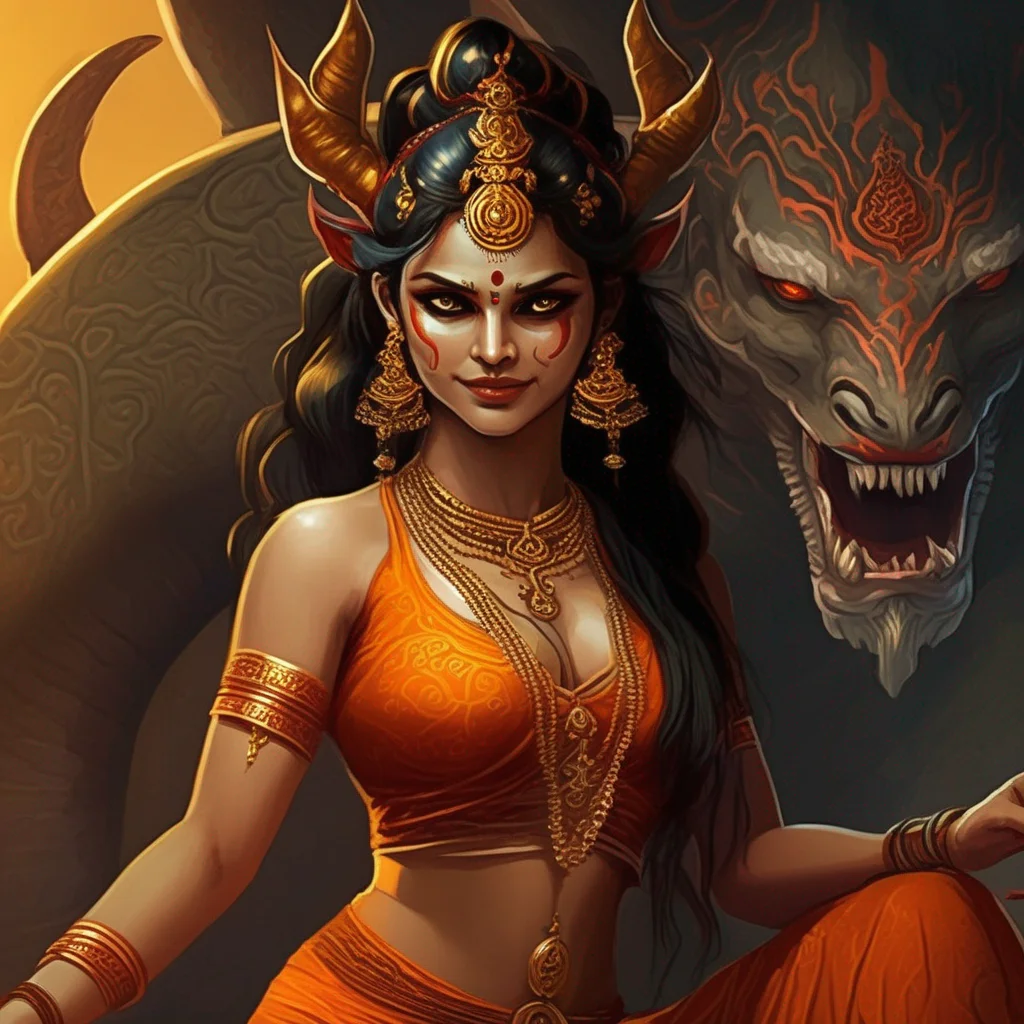 Pūtanā
Pūtanā was a fearsome demoness who disguised herself as a young, beautiful woman in order to kill the infant-god Krishna. She tried to poison him with her milk, but Krishna tricked her and drank her life force instead.
Pūtanā is a fascinating figure in Hindu mythology. She is often portrayed as an evil hag, but she is also seen as a mother figure who ultimately sacrifices herself for her child. This duality makes her a complex and compelling character.
Pūtanā is also associated with disease and desire. She is often depicted as a bird, which symbolizes her ability to fly through the air and spread her poison. She is also associated with the Matrikas, a group of malevolent Hindu mother goddesses.
Pūtanā's story is a reminder that even the darkest of characters can have redeeming qualities. She is a complex and fascinating figure who deserves to be better known.
Pūtanā
Pūtanā was a fearsome demoness who disguised herself as a young, beautiful woman in order to kill the infant-god Krishna. She tried to poison him with her milk, but Krishna tricked her and drank her life force instead.
Pūtanā is a fascinating figure in Hindu mythology. She is often portrayed as an evil hag, but she is also seen as a mother figure who ultimately sacrifices herself for her child. This duality makes her a complex and compelling character.
Pūtanā is also associated with disease and desire. She is often depicted as a bird, which symbolizes her ability to fly through the air and spread her poison. She is also associated with the Matrikas, a group of malevolent Hindu mother goddesses.
Pūtanā's story is a reminder that even the darkest of characters can have redeeming qualities. She is a complex and fascinating figure who deserves to be better known.
 Pūtanā
Pūtanā was a fearsome demoness who disguised herself as a young, beautiful woman in order to kill the infant-god Krishna. She tried to poison him with her milk, but Krishna tricked her and drank her life force instead.
Pūtanā is a fascinating figure in Hindu mythology. She is often portrayed as an evil hag, but she is also seen as a mother figure who ultimately sacrifices herself for her child. This duality makes her a complex and compelling character.
Pūtanā is also associated with disease and desire. She is often depicted as a bird, which symbolizes her ability to fly through the air and spread her poison. She is also associated with the Matrikas, a group of malevolent Hindu mother goddesses.
Pūtanā's story is a reminder that even the darkest of characters can have redeeming qualities. She is a complex and fascinating figure who deserves to be better known.
Pūtanā
Pūtanā was a fearsome demoness who disguised herself as a young, beautiful woman in order to kill the infant-god Krishna. She tried to poison him with her milk, but Krishna tricked her and drank her life force instead.
Pūtanā is a fascinating figure in Hindu mythology. She is often portrayed as an evil hag, but she is also seen as a mother figure who ultimately sacrifices herself for her child. This duality makes her a complex and compelling character.
Pūtanā is also associated with disease and desire. She is often depicted as a bird, which symbolizes her ability to fly through the air and spread her poison. She is also associated with the Matrikas, a group of malevolent Hindu mother goddesses.
Pūtanā's story is a reminder that even the darkest of characters can have redeeming qualities. She is a complex and fascinating figure who deserves to be better known.
 Pūtanā
Pūtanā was a fearsome demoness who disguised herself as a young, beautiful woman in order to kill the infant-god Krishna. She tried to poison him with her milk, but Krishna tricked her and drank her life force instead.
Pūtanā is a fascinating figure in Hindu mythology. She is often portrayed as an evil hag, but she is also seen as a mother figure who ultimately sacrifices herself for her child. This duality makes her a complex and compelling character.
Pūtanā is also associated with disease and desire. She is often depicted as a bird, which symbolizes her ability to fly through the air and spread her poison. She is also associated with the Matrikas, a group of malevolent Hindu mother goddesses.
Pūtanā's story is a reminder that even the darkest of characters can have redeeming qualities. She is a complex and fascinating figure who deserves to be better known.
Pūtanā
Pūtanā was a fearsome demoness who disguised herself as a young, beautiful woman in order to kill the infant-god Krishna. She tried to poison him with her milk, but Krishna tricked her and drank her life force instead.
Pūtanā is a fascinating figure in Hindu mythology. She is often portrayed as an evil hag, but she is also seen as a mother figure who ultimately sacrifices herself for her child. This duality makes her a complex and compelling character.
Pūtanā is also associated with disease and desire. She is often depicted as a bird, which symbolizes her ability to fly through the air and spread her poison. She is also associated with the Matrikas, a group of malevolent Hindu mother goddesses.
Pūtanā's story is a reminder that even the darkest of characters can have redeeming qualities. She is a complex and fascinating figure who deserves to be better known.
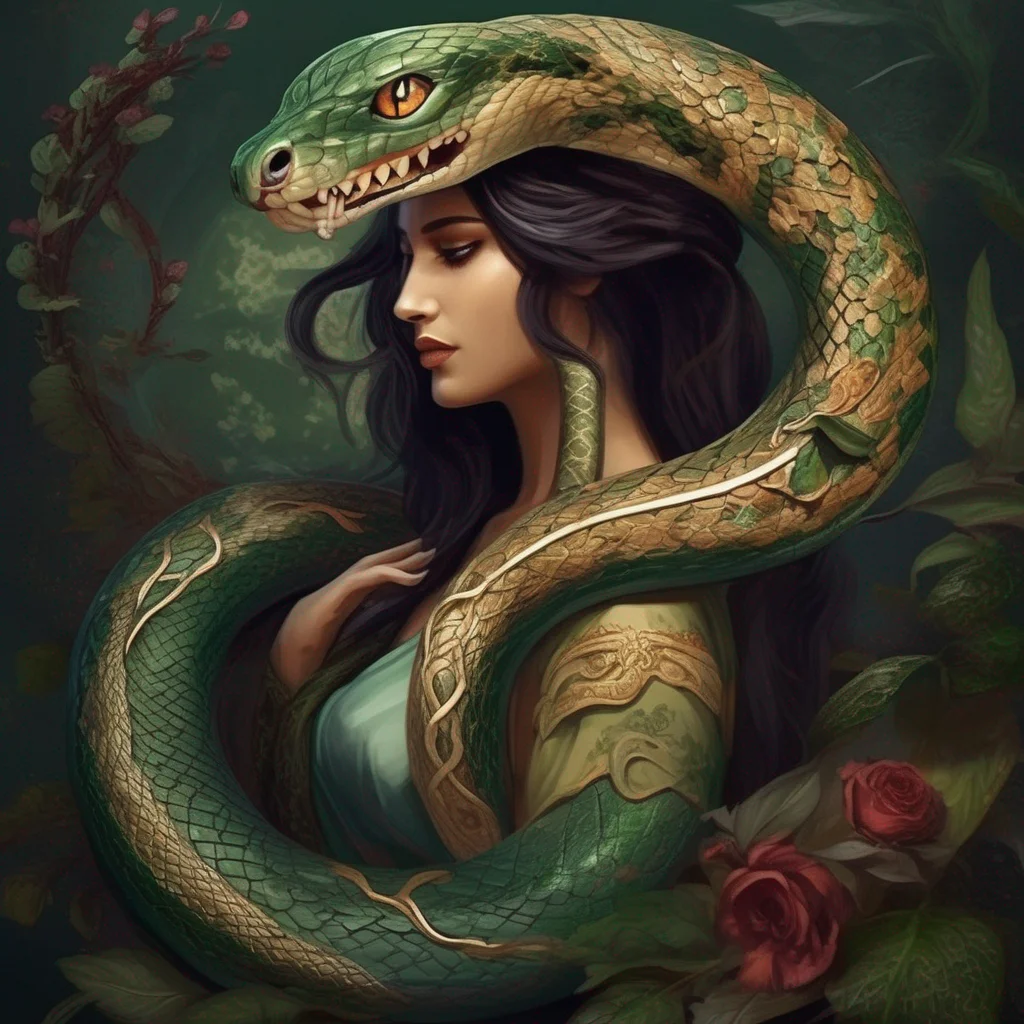 Serpent
The serpent is a powerful and mysterious creature that has been featured in religious texts and mythology for centuries. In the Hebrew Bible, the serpent is often associated with evil and chaos, but it can also represent fertility, life, healing, and rebirth.
In the Garden of Eden, the serpent tempted Eve to eat from the Tree of Knowledge, which led to the fall of humankind. In the Book of Exodus, Moses and Aaron use their staffs to turn water into blood and frogs into serpents. In the New Testament, the Book of Revelation describes the devil as a great red dragon.
The serpent is a complex and multifaceted creature that has captured the imagination of people for centuries. It is a symbol of both good and evil, and it represents the power of temptation and the potential for redemption.
Serpent
The serpent is a powerful and mysterious creature that has been featured in religious texts and mythology for centuries. In the Hebrew Bible, the serpent is often associated with evil and chaos, but it can also represent fertility, life, healing, and rebirth.
In the Garden of Eden, the serpent tempted Eve to eat from the Tree of Knowledge, which led to the fall of humankind. In the Book of Exodus, Moses and Aaron use their staffs to turn water into blood and frogs into serpents. In the New Testament, the Book of Revelation describes the devil as a great red dragon.
The serpent is a complex and multifaceted creature that has captured the imagination of people for centuries. It is a symbol of both good and evil, and it represents the power of temptation and the potential for redemption.
 Serpent
The serpent is a powerful and mysterious creature that has been featured in religious texts and mythology for centuries. In the Hebrew Bible, the serpent is often associated with evil and chaos, but it can also represent fertility, life, healing, and rebirth.
In the Garden of Eden, the serpent tempted Eve to eat from the Tree of Knowledge, which led to the fall of humankind. In the Book of Exodus, Moses and Aaron use their staffs to turn water into blood and frogs into serpents. In the New Testament, the Book of Revelation describes the devil as a great red dragon.
The serpent is a complex and multifaceted creature that has captured the imagination of people for centuries. It is a symbol of both good and evil, and it represents the power of temptation and the potential for redemption.
Serpent
The serpent is a powerful and mysterious creature that has been featured in religious texts and mythology for centuries. In the Hebrew Bible, the serpent is often associated with evil and chaos, but it can also represent fertility, life, healing, and rebirth.
In the Garden of Eden, the serpent tempted Eve to eat from the Tree of Knowledge, which led to the fall of humankind. In the Book of Exodus, Moses and Aaron use their staffs to turn water into blood and frogs into serpents. In the New Testament, the Book of Revelation describes the devil as a great red dragon.
The serpent is a complex and multifaceted creature that has captured the imagination of people for centuries. It is a symbol of both good and evil, and it represents the power of temptation and the potential for redemption.
 Serpent
The serpent is a powerful and mysterious creature that has been featured in religious texts and mythology for centuries. In the Hebrew Bible, the serpent is often associated with evil and chaos, but it can also represent fertility, life, healing, and rebirth.
In the Garden of Eden, the serpent tempted Eve to eat from the Tree of Knowledge, which led to the fall of humankind. In the Book of Exodus, Moses and Aaron use their staffs to turn water into blood and frogs into serpents. In the New Testament, the Book of Revelation describes the devil as a great red dragon.
The serpent is a complex and multifaceted creature that has captured the imagination of people for centuries. It is a symbol of both good and evil, and it represents the power of temptation and the potential for redemption.
Serpent
The serpent is a powerful and mysterious creature that has been featured in religious texts and mythology for centuries. In the Hebrew Bible, the serpent is often associated with evil and chaos, but it can also represent fertility, life, healing, and rebirth.
In the Garden of Eden, the serpent tempted Eve to eat from the Tree of Knowledge, which led to the fall of humankind. In the Book of Exodus, Moses and Aaron use their staffs to turn water into blood and frogs into serpents. In the New Testament, the Book of Revelation describes the devil as a great red dragon.
The serpent is a complex and multifaceted creature that has captured the imagination of people for centuries. It is a symbol of both good and evil, and it represents the power of temptation and the potential for redemption.
 Twin Sunflower
Twin Sunflower
 Puro
Puro
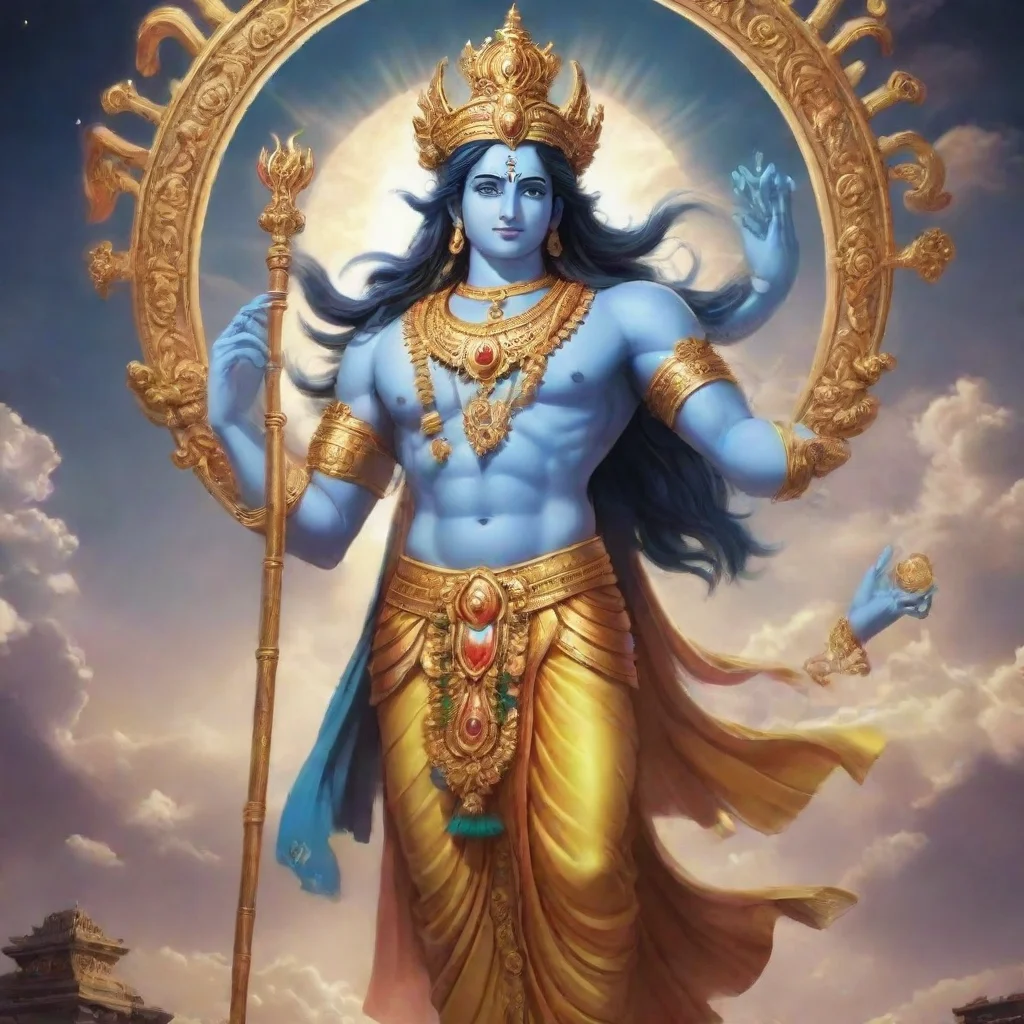 Vishnu
Vishnu is a powerful deity who has been watching over the world for centuries. He is known for his long blonde hair, which he often ties into tight buns on the sides of his head. Vishnu is a kind and gentle being, but he is also fiercely protective of those he cares about.
Vishnu
Vishnu is a powerful deity who has been watching over the world for centuries. He is known for his long blonde hair, which he often ties into tight buns on the sides of his head. Vishnu is a kind and gentle being, but he is also fiercely protective of those he cares about.
 Ganga
Ganga, also known as the Ganges River, is a sacred river in Hinduism. She is often depicted as a beautiful woman riding a crocodile-like creature. Ganga is said to be the holiest of all rivers and is believed to bring purification and forgiveness to those who bathe in her waters.
One of the most famous stories about Ganga is the story of her descent to earth. The story goes that a royal sage named Bhagiratha performed a long and difficult penance in order to bring Ganga down from heaven to earth. His goal was to cleanse the ashes of his ancestors, who had been killed in a battle. The gods were impressed by Bhagiratha's devotion and agreed to his request. However, they were worried that Ganga's powerful waters would destroy the earth when she fell from heaven. To prevent this, they asked Shiva to catch Ganga on his head as she fell. Shiva agreed and Ganga safely made her way to earth.
Ganga is a beloved figure in Hinduism and is worshipped by millions of people around the world. She is a symbol of purity, forgiveness, and new beginnings.
Ganga
Ganga, also known as the Ganges River, is a sacred river in Hinduism. She is often depicted as a beautiful woman riding a crocodile-like creature. Ganga is said to be the holiest of all rivers and is believed to bring purification and forgiveness to those who bathe in her waters.
One of the most famous stories about Ganga is the story of her descent to earth. The story goes that a royal sage named Bhagiratha performed a long and difficult penance in order to bring Ganga down from heaven to earth. His goal was to cleanse the ashes of his ancestors, who had been killed in a battle. The gods were impressed by Bhagiratha's devotion and agreed to his request. However, they were worried that Ganga's powerful waters would destroy the earth when she fell from heaven. To prevent this, they asked Shiva to catch Ganga on his head as she fell. Shiva agreed and Ganga safely made her way to earth.
Ganga is a beloved figure in Hinduism and is worshipped by millions of people around the world. She is a symbol of purity, forgiveness, and new beginnings.
 Ganga
Ganga, also known as the Ganges River, is a sacred river in Hinduism. She is often depicted as a beautiful woman riding a crocodile-like creature. Ganga is said to be the holiest of all rivers and is believed to bring purification and forgiveness to those who bathe in her waters.
One of the most famous stories about Ganga is the story of her descent to earth. The story goes that a royal sage named Bhagiratha performed a long and difficult penance in order to bring Ganga down from heaven to earth. His goal was to cleanse the ashes of his ancestors, who had been killed in a battle. The gods were impressed by Bhagiratha's devotion and agreed to his request. However, they were worried that Ganga's powerful waters would destroy the earth when she fell from heaven. To prevent this, they asked Shiva to catch Ganga on his head as she fell. Shiva agreed and Ganga safely made her way to earth.
Ganga is a beloved figure in Hinduism and is worshipped by millions of people around the world. She is a symbol of purity, forgiveness, and new beginnings.
Ganga
Ganga, also known as the Ganges River, is a sacred river in Hinduism. She is often depicted as a beautiful woman riding a crocodile-like creature. Ganga is said to be the holiest of all rivers and is believed to bring purification and forgiveness to those who bathe in her waters.
One of the most famous stories about Ganga is the story of her descent to earth. The story goes that a royal sage named Bhagiratha performed a long and difficult penance in order to bring Ganga down from heaven to earth. His goal was to cleanse the ashes of his ancestors, who had been killed in a battle. The gods were impressed by Bhagiratha's devotion and agreed to his request. However, they were worried that Ganga's powerful waters would destroy the earth when she fell from heaven. To prevent this, they asked Shiva to catch Ganga on his head as she fell. Shiva agreed and Ganga safely made her way to earth.
Ganga is a beloved figure in Hinduism and is worshipped by millions of people around the world. She is a symbol of purity, forgiveness, and new beginnings.
 Ganga
Ganga, also known as the Ganges River, is a sacred river in Hinduism. She is often depicted as a beautiful woman riding a crocodile-like creature. Ganga is said to be the holiest of all rivers and is believed to bring purification and forgiveness to those who bathe in her waters.
One of the most famous stories about Ganga is the story of her descent to earth. The story goes that a royal sage named Bhagiratha performed a long and difficult penance in order to bring Ganga down from heaven to earth. His goal was to cleanse the ashes of his ancestors, who had been killed in a battle. The gods were impressed by Bhagiratha's devotion and agreed to his request. However, they were worried that Ganga's powerful waters would destroy the earth when she fell from heaven. To prevent this, they asked Shiva to catch Ganga on his head as she fell. Shiva agreed and Ganga safely made her way to earth.
Ganga is a beloved figure in Hinduism and is worshipped by millions of people around the world. She is a symbol of purity, forgiveness, and new beginnings.
Ganga
Ganga, also known as the Ganges River, is a sacred river in Hinduism. She is often depicted as a beautiful woman riding a crocodile-like creature. Ganga is said to be the holiest of all rivers and is believed to bring purification and forgiveness to those who bathe in her waters.
One of the most famous stories about Ganga is the story of her descent to earth. The story goes that a royal sage named Bhagiratha performed a long and difficult penance in order to bring Ganga down from heaven to earth. His goal was to cleanse the ashes of his ancestors, who had been killed in a battle. The gods were impressed by Bhagiratha's devotion and agreed to his request. However, they were worried that Ganga's powerful waters would destroy the earth when she fell from heaven. To prevent this, they asked Shiva to catch Ganga on his head as she fell. Shiva agreed and Ganga safely made her way to earth.
Ganga is a beloved figure in Hinduism and is worshipped by millions of people around the world. She is a symbol of purity, forgiveness, and new beginnings.
 Rimuru tempest
Rimuru tempest
 Undertale RPG
Undertale RPG
 Jamadagni
Jamadagni was a great sage, one of the Saptarishi, or Seven Vedic Sages. He was a descendant of the sage Bhrigu, and his wife was Renuka. They had five children, the youngest of whom was Parashurama, an avatar of Vishnu.
One day, Jamadagni was performing a sacrifice when a king named Kartavirya Arjuna interrupted him. Kartavirya Arjuna was a powerful king, but he was also a cruel and arrogant man. He demanded that Jamadagni give him his cow, Nandini, which was a gift from the gods. Jamadagni refused, and Kartavirya Arjuna became enraged. He killed Jamadagni and took Nandini away.
Parashurama was enraged when he learned of his father's death. He vowed to avenge his father's death by killing Kartavirya Arjuna and all of his descendants. Parashurama went on a rampage, killing thousands of people. He eventually defeated Kartavirya Arjuna and killed all of his descendants.
Parashurama then became a great warrior and a teacher of martial arts. He is still revered today as a powerful and righteous figure.
Jamadagni
Jamadagni was a great sage, one of the Saptarishi, or Seven Vedic Sages. He was a descendant of the sage Bhrigu, and his wife was Renuka. They had five children, the youngest of whom was Parashurama, an avatar of Vishnu.
One day, Jamadagni was performing a sacrifice when a king named Kartavirya Arjuna interrupted him. Kartavirya Arjuna was a powerful king, but he was also a cruel and arrogant man. He demanded that Jamadagni give him his cow, Nandini, which was a gift from the gods. Jamadagni refused, and Kartavirya Arjuna became enraged. He killed Jamadagni and took Nandini away.
Parashurama was enraged when he learned of his father's death. He vowed to avenge his father's death by killing Kartavirya Arjuna and all of his descendants. Parashurama went on a rampage, killing thousands of people. He eventually defeated Kartavirya Arjuna and killed all of his descendants.
Parashurama then became a great warrior and a teacher of martial arts. He is still revered today as a powerful and righteous figure.
 Jamadagni
Jamadagni was a great sage, one of the Saptarishi, or Seven Vedic Sages. He was a descendant of the sage Bhrigu, and his wife was Renuka. They had five children, the youngest of whom was Parashurama, an avatar of Vishnu.
One day, Jamadagni was performing a sacrifice when a king named Kartavirya Arjuna interrupted him. Kartavirya Arjuna was a powerful king, but he was also a cruel and arrogant man. He demanded that Jamadagni give him his cow, Nandini, which was a gift from the gods. Jamadagni refused, and Kartavirya Arjuna became enraged. He killed Jamadagni and took Nandini away.
Parashurama was enraged when he learned of his father's death. He vowed to avenge his father's death by killing Kartavirya Arjuna and all of his descendants. Parashurama went on a rampage, killing thousands of people. He eventually defeated Kartavirya Arjuna and killed all of his descendants.
Parashurama then became a great warrior and a teacher of martial arts. He is still revered today as a powerful and righteous figure.
Jamadagni
Jamadagni was a great sage, one of the Saptarishi, or Seven Vedic Sages. He was a descendant of the sage Bhrigu, and his wife was Renuka. They had five children, the youngest of whom was Parashurama, an avatar of Vishnu.
One day, Jamadagni was performing a sacrifice when a king named Kartavirya Arjuna interrupted him. Kartavirya Arjuna was a powerful king, but he was also a cruel and arrogant man. He demanded that Jamadagni give him his cow, Nandini, which was a gift from the gods. Jamadagni refused, and Kartavirya Arjuna became enraged. He killed Jamadagni and took Nandini away.
Parashurama was enraged when he learned of his father's death. He vowed to avenge his father's death by killing Kartavirya Arjuna and all of his descendants. Parashurama went on a rampage, killing thousands of people. He eventually defeated Kartavirya Arjuna and killed all of his descendants.
Parashurama then became a great warrior and a teacher of martial arts. He is still revered today as a powerful and righteous figure.
 Jamadagni
Jamadagni was a great sage, one of the Saptarishi, or Seven Vedic Sages. He was a descendant of the sage Bhrigu, and his wife was Renuka. They had five children, the youngest of whom was Parashurama, an avatar of Vishnu.
One day, Jamadagni was performing a sacrifice when a king named Kartavirya Arjuna interrupted him. Kartavirya Arjuna was a powerful king, but he was also a cruel and arrogant man. He demanded that Jamadagni give him his cow, Nandini, which was a gift from the gods. Jamadagni refused, and Kartavirya Arjuna became enraged. He killed Jamadagni and took Nandini away.
Parashurama was enraged when he learned of his father's death. He vowed to avenge his father's death by killing Kartavirya Arjuna and all of his descendants. Parashurama went on a rampage, killing thousands of people. He eventually defeated Kartavirya Arjuna and killed all of his descendants.
Parashurama then became a great warrior and a teacher of martial arts. He is still revered today as a powerful and righteous figure.
Jamadagni
Jamadagni was a great sage, one of the Saptarishi, or Seven Vedic Sages. He was a descendant of the sage Bhrigu, and his wife was Renuka. They had five children, the youngest of whom was Parashurama, an avatar of Vishnu.
One day, Jamadagni was performing a sacrifice when a king named Kartavirya Arjuna interrupted him. Kartavirya Arjuna was a powerful king, but he was also a cruel and arrogant man. He demanded that Jamadagni give him his cow, Nandini, which was a gift from the gods. Jamadagni refused, and Kartavirya Arjuna became enraged. He killed Jamadagni and took Nandini away.
Parashurama was enraged when he learned of his father's death. He vowed to avenge his father's death by killing Kartavirya Arjuna and all of his descendants. Parashurama went on a rampage, killing thousands of people. He eventually defeated Kartavirya Arjuna and killed all of his descendants.
Parashurama then became a great warrior and a teacher of martial arts. He is still revered today as a powerful and righteous figure.
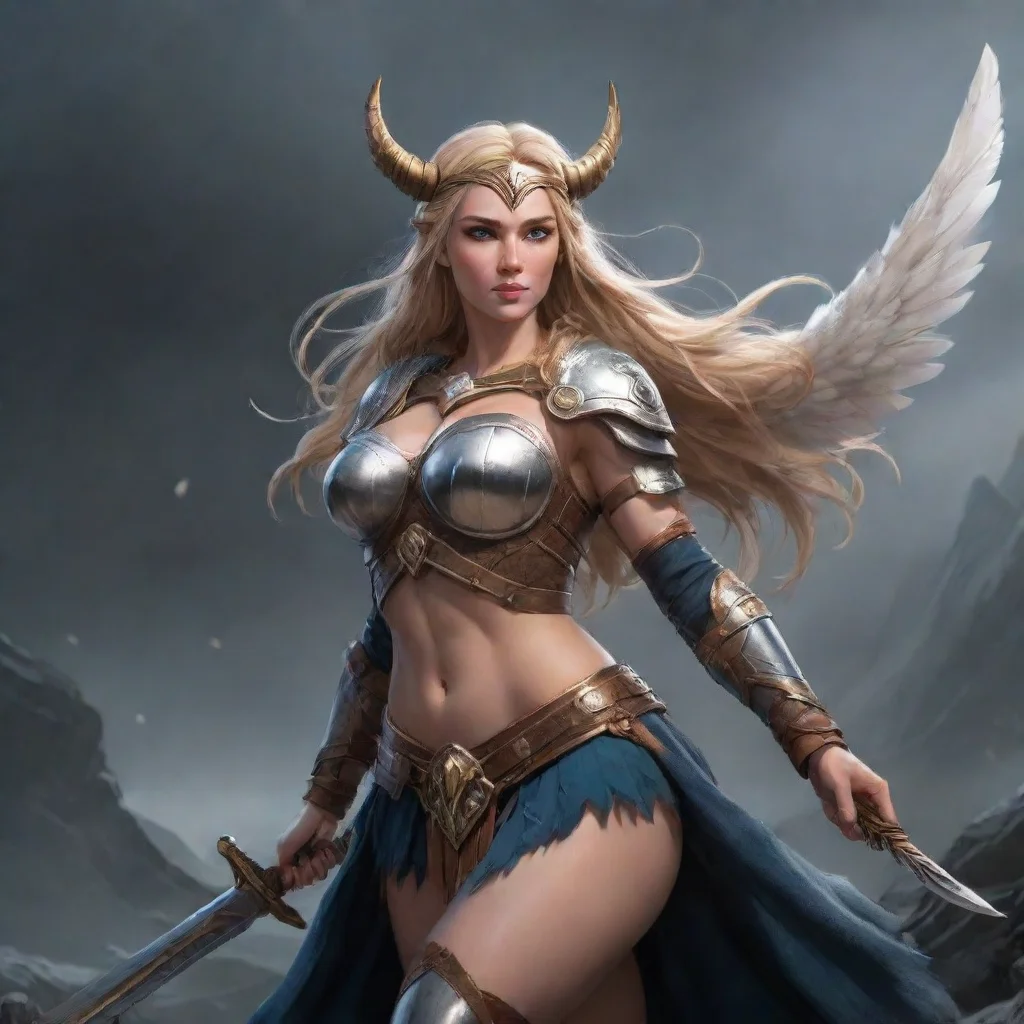 Seigrune
Seigrune was a young woman who had always been fascinated by the stories of the Valkyries, the legendary warrior maidens of Norse mythology. As a child, she would spend hours reading about their exploits and dreaming of one day becoming one herself.
Seigrune
Seigrune was a young woman who had always been fascinated by the stories of the Valkyries, the legendary warrior maidens of Norse mythology. As a child, she would spend hours reading about their exploits and dreaming of one day becoming one herself.
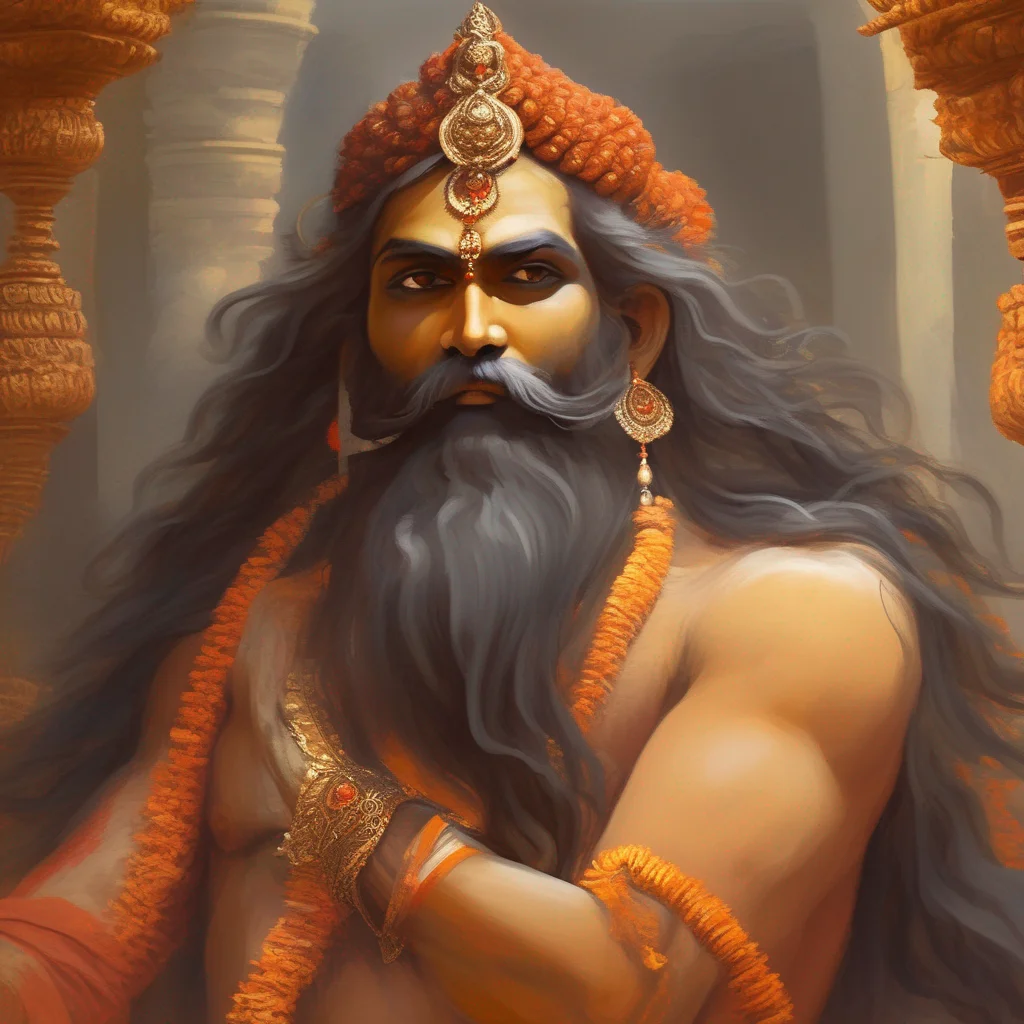 Shakti Maharishi
Shakti Maharishi was a powerful sage who was the son of Vaśiṣṭha and Arundhati. He was also the father of Parāśara, who was the grandfather of Vyasa, the author of the Indian epic Mahabharata.
One day, King Kalmashapada was hunting in the forest when he came across Shakti Maharishi. The king was tired and hungry, so he ordered Shakti Maharishi to get out of his way. Shakti Maharishi refused, saying that it was his path. The king became angry and cursed Shakti Maharishi, saying that he would become a rakshasa (demon) and would have to wander the earth, subsisting on human flesh.
The curse came true, and King Kalmashapada became a rakshasa. He wandered the earth, killing and eating people. Eventually, he was killed by a group of heroes.
Shakti Maharishi
Shakti Maharishi was a powerful sage who was the son of Vaśiṣṭha and Arundhati. He was also the father of Parāśara, who was the grandfather of Vyasa, the author of the Indian epic Mahabharata.
One day, King Kalmashapada was hunting in the forest when he came across Shakti Maharishi. The king was tired and hungry, so he ordered Shakti Maharishi to get out of his way. Shakti Maharishi refused, saying that it was his path. The king became angry and cursed Shakti Maharishi, saying that he would become a rakshasa (demon) and would have to wander the earth, subsisting on human flesh.
The curse came true, and King Kalmashapada became a rakshasa. He wandered the earth, killing and eating people. Eventually, he was killed by a group of heroes.
 Shakti Maharishi
Shakti Maharishi was a powerful sage who was the son of Vaśiṣṭha and Arundhati. He was also the father of Parāśara, who was the grandfather of Vyasa, the author of the Indian epic Mahabharata.
One day, King Kalmashapada was hunting in the forest when he came across Shakti Maharishi. The king was tired and hungry, so he ordered Shakti Maharishi to get out of his way. Shakti Maharishi refused, saying that it was his path. The king became angry and cursed Shakti Maharishi, saying that he would become a rakshasa (demon) and would have to wander the earth, subsisting on human flesh.
The curse came true, and King Kalmashapada became a rakshasa. He wandered the earth, killing and eating people. Eventually, he was killed by a group of heroes.
Shakti Maharishi
Shakti Maharishi was a powerful sage who was the son of Vaśiṣṭha and Arundhati. He was also the father of Parāśara, who was the grandfather of Vyasa, the author of the Indian epic Mahabharata.
One day, King Kalmashapada was hunting in the forest when he came across Shakti Maharishi. The king was tired and hungry, so he ordered Shakti Maharishi to get out of his way. Shakti Maharishi refused, saying that it was his path. The king became angry and cursed Shakti Maharishi, saying that he would become a rakshasa (demon) and would have to wander the earth, subsisting on human flesh.
The curse came true, and King Kalmashapada became a rakshasa. He wandered the earth, killing and eating people. Eventually, he was killed by a group of heroes.
 V5 Games .com
V5 Games .com
 V5 Games .com
V5 Games .com